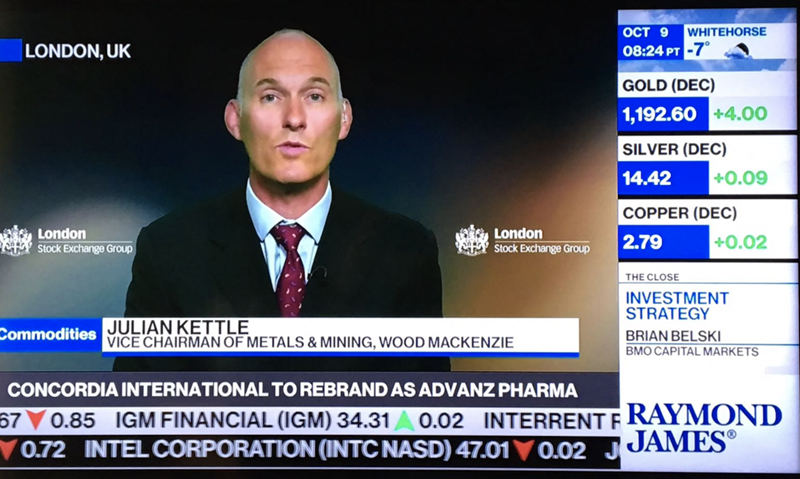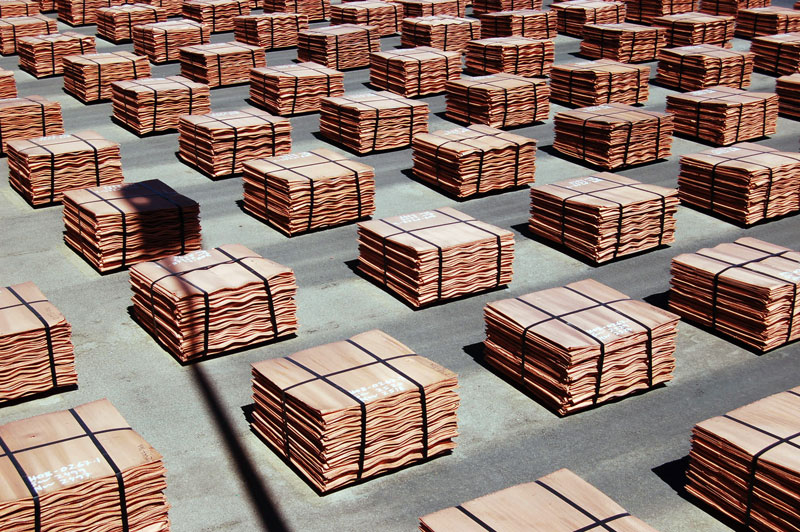Discuss your challenges with our solutions experts
Strong macro headwinds provide a mixed outlook for mined commodity markets
Prices trending downwards across much of the complex
1 minute read
This article first appear in Forbes on Oct 7, 2018.
After a positive start to 2018, growing trade tensions have raised concerns over global economic growth, while tightening global liquidity is having an adverse effect on many emerging economies. With investor confidence dampened, the recent unwinding of exposure to commodities markets has driven down prices across much of the complex. However, in general, year-to-date averages remain above comparable 2017 levels.
Industry gears up for the long-term
Nickel has been the best performer this year, with 9 month average prices up by 36% year-on-year. Stubbornly high visible inventories are finally being drawn down, although not all for immediate consumption. Medium-term demand growth prospects look positive and we anticipate a period of higher prices supported by strong fundamentals from 2019.
Copper prices were well supported through the first half of 2018. However, the recent downtrend has been fuelled by negative macro events and higher-than-expected metal output due to a lack of mine disruptions.
Copper prices were well supported through the first half of 2018.
Nevertheless, 9 month copper prices were still 12% above the same period in 2017. While the general consensus is that copper’s longer-term fundamentals are very positive, the medium-term outlook is less so, with prices projected to trend sideways.
Although aluminium cash quotes have declined since June, for the 9 month period, they have increased by 12% year-on-year. Trade policies, environmental factors and US sanctions have all played their part in shaping the aluminium market this year and will continue to do so in the medium term. This means that fundamentals are set to remain tight and with rising marginal costs, this should result in good price support.
How might the shutdown of a key processing plant affect aluminium prices?
Julian Kettle, vice chairman of metals and mining for Wood Mackenzie, appears on BNN Bloomberg during London Metal Exchange week to explore the changing dynamics in the aluminium market, including US import tarrifs, the potential impact of a Brazilian refinery shutdown and alumina prices.

Julian Kettle appears on BNN Bloomberg
Electrification on the agenda for battery metals
After a very strong start to 2018, zinc prices have plummeted, with September’s average down by 30% compared to the February peak, although 9 month prices were up by 9% year-on-year. Robust mine growth and a contraction in smelter production will result in a third consecutive year of metal deficits. The ongoing decline in zinc stocks will provide fundamental support for prices, recovering gradually from current levels to revisit the early 2018 highs in the first half of 2020.
Lithium and cobalt markets have both succumbed to strong supply growth in response to high prices. Since the start of 2018, Chinese lithium carbonate prices have almost halved and cobalt prices have fallen by over one third since March. Despite some softness in medium-term prices, the narrative remains positive for both metals given the rising requirements for vehicle electrification and energy storage. Double-digit growth is expected for lithium demand out to 2025 and despite the anticipated wave of supply, the cobalt market will be in deficit as soon as 2023.
Lead has broadly followed zinc, with average prices in September down by 22% relative to January’s peak, although 9 month cash quotes increased by 3% year-on-year. While refined supply is set to outpace demand to 2021, we do not expect this to be materially detrimental to prices.
-
9%
Zinc prices up by 9% year-on-year in 2018
-
30%
September's average zinc price, down by 30% compared to February's peak
-
22%
September's average lead price, down by 22% compared to January's peak
Resilience of Chinese hot metal good news for iron ore prices
The iron ore market has experienced its longest period of price stability since the index was launched. Wider price spreads based on grade and quality are symptomatic of the structural changes within China’s steel industry and will remain an important feature of the market. Peak steel in China is drawing nearer and seaborne trade in iron ore is approaching stagnation, but good times remain ahead for low cost suppliers of premium iron ore products.
Since the bottoming out of metals prices in 2015 and 2016, there has been extreme cost cutting and tidying up of balance sheets. With prices rising and margins once more expanding, miners have resumed dividends and share buy backs. But where is the investment in new capacity? Financial, geopolitical and technical risks are all playing a role, and only time will tell if we will see more metal project FIDs in the short-term.







